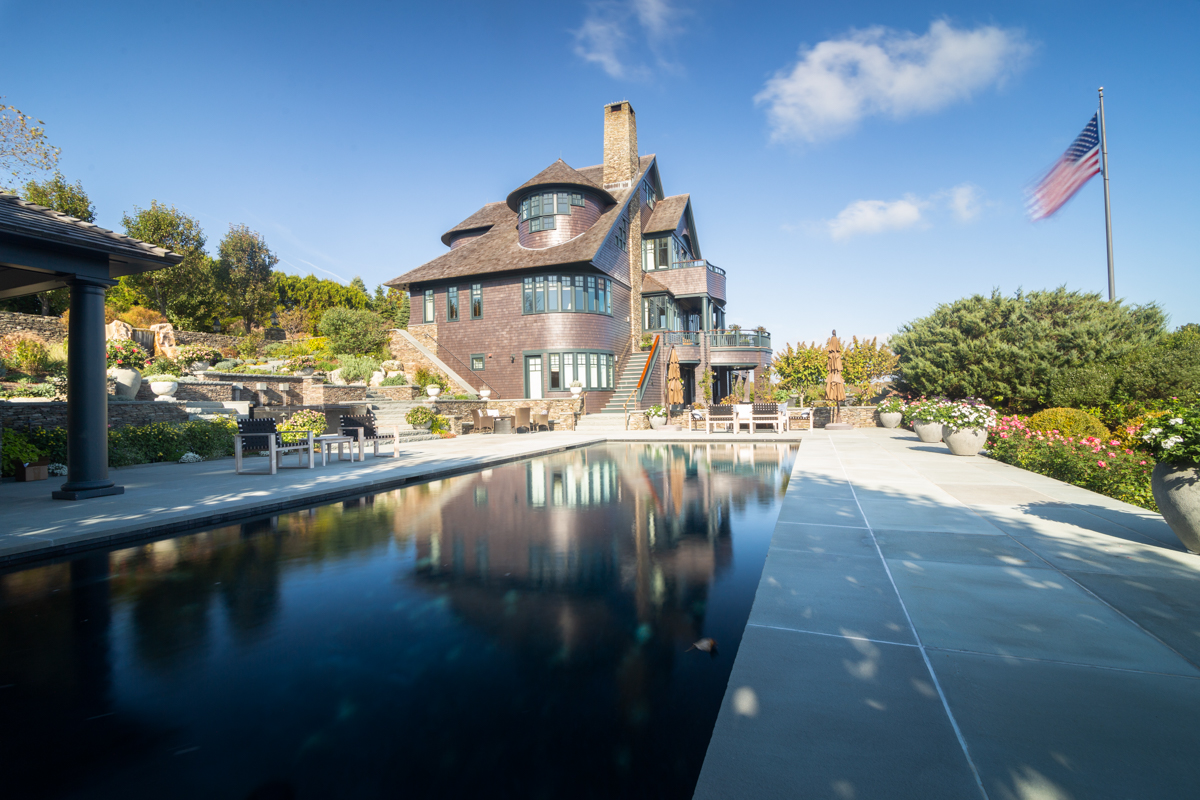Ⓒ Nick Mele
When most architectural projects are designed, they are created to meet a specific purpose over a particular period of time. A store might be designed to be depreciated over the period of the lease; a hotel might be designed to capture the attention of the public for 5-10 years before being updated again. Houses may be designed to be fixed and “flipped” to the next buyer. There is however a special type of project which has a much longer-term time horizon: “The Legacy Home.” These are residential buildings that are constructed not just with current use and ownership in mind but with future generations of the family being considered as well.
Here in Newport, Rhode Island, where our offices are located, there are many houses that are owned by the great-great-grandchildren of the people who first commissioned the structures more than one hundred years previously. Visiting these homes, it is amazing to think that a certain painting or grand piece of furniture has been in the same place through multiple generations.

The current world is one in which it feels like the speed of change is only accelerating. Climate, technology and the political future of nations all seem in constant flux. Perhaps the rise of a new generation of architectural clients is a desire to counteract this sense of instability. We have been fortunate to work with a series of clients who are having houses designed to last multiple generations within the same family.
The beauty of this approach is that we, as designers, have the luxury to think about the right way to build and then execute that plan. The quality of insulation can be the best because the owner will easily be able to recoup the cost over time. Materials can be selected which are the most durable and beautiful in that it is probable they will be there a very long time. Design decisions are made without regard to what is fashionable or trendy at the moment because everyone understands – that the design must look equally good 20, 40 or even 60 years later.

In Europe the great houses and palaces were frequently passed down generation to generation. In Downton Abbey, a TV series where the home is a central character to the story, Lord Grantham says of the grand structure “Downton… is my third parent and my fourth child,” which perfectly captures just how important a house can be in the life of a family.
What is interesting to me is how these “legacy homes” become among the most admired and economically efficient structures in the community. They have the air of tradition and authenticity which is nearly impossible to create from scratch. They are not continually being renovated to try to keep up with the latest style. They are well built and highly energy efficient because of the quality and care employed in their construction. They always seem to get the maintenance needed before small issues become big problems. There are of course challenges with legacy houses in that houses cannot be easily subdivided into smaller pieces to meet the widening demands made by the proliferation of children and grand children but many families seem to figure out ways to share beloved structures over time and over successive generations.

What is lovely about “legacy houses” is that they treat architecture not as a disposable commodity to be used up and eventually demolished for the next generation, but as a permanent contribution to the community of buildings in a beloved place. Architecture is what each generation leaves behind so that future generations can remember them. As the famous nineteenth century English architectural historian John Ruskin is famous for saying “when we build, let us think that we build forever. Let it not be for present delight nor for the present use alone. Let it be such work as our descendants will thank us for; and let us think, as we lay stone to stone, that a time is to come when those stones will be held sacred because our hands have touched them, and that men will say, as they look upon the labor wrought substance of them, ‘See! This our father did for us.’” That is certainly the perspective of those who are choose to undertake Legacy House projects.
Ross Cann, RA, AIA, LEED AP, is an author, historian, and practicing architect living and working in Newport, RI. He holds degrees with honor in Architecture from Yale, Cambridge, and Columbia Universities.
